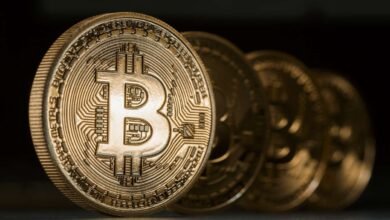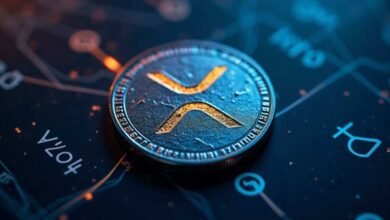
The Future of XRP in the Digital Economy: A Key Player in the Next Generation of Finance
As the digital economy continues to evolve, the financial industry is witnessing a profound transformation driven by blockchain technology and digital currencies. Among the leading digital assets in the cryptocurrency space, XRP stands out as one of the most promising solutions for reshaping the way we conduct financial transactions. Powered by Ripple’s innovative blockchain technology, XRP is poised to play a pivotal role in the future of finance by offering faster, cheaper, and more secure payment solutions for businesses, financial institutions, and individuals across the globe.
With growing adoption, increasing partnerships, and its ability to integrate with traditional financial systems, XRP is positioning itself to be at the forefront of the digital economy. Here’s a closer look at why XRP is seen as a critical asset in the evolving financial landscape and what the future holds for this groundbreaking cryptocurrency.
XRP: The Bridge Between Traditional Finance and the Digital Economy
One of the most exciting aspects of XRP’s future is its ability to bridge the gap between traditional financial systems and the emerging world of digital currencies. Unlike many cryptocurrencies that are seen as separate from the legacy banking system, XRP is designed to seamlessly integrate with existing infrastructure, making it an ideal choice for financial institutions looking to modernize their payment systems.
Ripple, the company behind XRP, has created a payment network that leverages the digital asset to facilitate fast and cost-effective cross-border payments. Traditional financial systems, including legacy payment networks such as SWIFT, often involve multiple intermediaries and lengthy processing times, resulting in delays and high transaction costs. XRP, however, allows for instant settlement of transactions, bypassing the need for intermediaries and drastically reducing costs.
Ripple’s partnership with major global banks and financial institutions is evidence of XRP’s growing acceptance as a reliable and efficient payment solution. Institutions such as Santander, PNC Financial Services, and American Express have all adopted Ripple’s technology to improve the speed and cost-efficiency of their international payments, and many more are expected to follow suit.
As the digital economy continues to expand, XRP’s role in facilitating seamless cross-border payments and reducing friction in the global financial system will only grow. Its ability to work with traditional finance while supporting the rise of digital currencies makes it a valuable asset in the transition to a more connected and efficient financial ecosystem.
A Fast, Low-Cost Solution for Global Payments
In today’s increasingly globalized economy, the demand for fast and affordable international payments has never been greater. Cross-border transactions are essential for global trade, remittances, and international business operations. However, the traditional systems used to process these payments have long been plagued by inefficiencies, with long settlement times and high transaction fees.
XRP has emerged as a game-changer in this space. By using Ripple’s blockchain technology, XRP enables near-instant settlement of payments, regardless of where the sender and receiver are located. What sets XRP apart is its ability to settle transactions in just a few seconds, even for cross-border payments, while traditional systems can take anywhere from one to five days to process such transactions.
In addition to speed, XRP offers a significant reduction in transaction costs. The fees associated with traditional international money transfers are often exorbitant, especially when multiple banks are involved in the process. XRP eliminates the need for intermediaries, allowing financial institutions to send payments directly to one another, which reduces costs significantly. As businesses and individuals increasingly demand lower-cost solutions for global payments, XRP is well-positioned to meet these needs.
The cryptocurrency’s low transaction fees and fast processing times are already making a significant impact on the remittance market, which plays a crucial role in many developing countries. By offering an affordable and efficient alternative to traditional remittance services, XRP has the potential to bring financial inclusion to millions of people around the world.
XRP’s Role in Supporting Central Bank Digital Currencies (CBDCs)
Central bank digital currencies (CBDCs) are rapidly gaining traction as countries explore the possibility of creating government-backed digital currencies to complement or replace traditional money. CBDCs are expected to play an increasingly important role in the future of global finance, providing a new level of security, efficiency, and accessibility to financial systems.
XRP’s role in the CBDC ecosystem is already being explored. Ripple has been working closely with central banks and governments worldwide to enable the interoperability of CBDCs with the existing financial infrastructure. One of the key challenges of CBDCs is ensuring that they can be easily exchanged between different countries and financial institutions without compromising security or efficiency. XRP’s ability to act as a bridge currency between different fiat currencies makes it an ideal solution for facilitating seamless cross-border transactions between CBDCs.
Ripple’s ongoing collaborations with central banks in countries like the United Kingdom, Japan, and Singapore are paving the way for XRP’s role in a future where CBDCs and digital currencies coexist. As the adoption of CBDCs grows, XRP will likely become a key player in enabling the efficient transfer and exchange of these digital assets.
Rising Demand for Digital Payments and Blockchain Solutions
The COVID-19 pandemic has accelerated the shift toward digital payments, with businesses and consumers increasingly relying on electronic solutions to conduct transactions. As more people shop online, make cross-border payments, and engage in digital financial services, the demand for fast, secure, and low-cost payment solutions has skyrocketed. In this environment, XRP is well-positioned to thrive.
XRP’s scalability and flexibility make it an ideal solution for businesses and financial institutions seeking to meet the rising demand for digital payments. Ripple’s XRP Ledger is designed to handle a high volume of transactions, ensuring that it can accommodate the growing needs of a digital-first economy. Whether it’s supporting high-value international payments or microtransactions, XRP’s speed and cost-efficiency make it a valuable tool for businesses across a variety of industries.
Furthermore, the blockchain technology underlying XRP offers enhanced security and transparency, which is crucial in an era where cyber threats and financial fraud are increasingly common. By providing a secure and decentralized platform for financial transactions, XRP is helping to establish trust in the digital economy.
XRP’s Continued Growth and Adoption
As the digital economy continues to expand, XRP’s adoption is set to grow exponentially. Ripple’s partnerships with major banks, payment providers, and fintech companies are expanding, and more businesses are realizing the value of using XRP to facilitate global payments. Ripple’s focus on regulatory compliance and its efforts to work closely with financial authorities have helped solidify XRP’s position as a trusted and secure digital asset.
The growing network of partnerships and collaborations between Ripple and financial institutions across the globe indicates that XRP is on track to become an essential part of the future financial infrastructure. With a strong foundation in cross-border payments, XRP’s future role in the digital economy is set to be a major driver of innovation in the financial sector.
The Bright Future Ahead for XRP
XRP’s future in the digital economy is incredibly promising. As the world shifts toward a more digital and interconnected financial system, XRP is poised to play a central role in facilitating fast, secure, and low-cost payments. Whether it’s supporting cross-border transactions, integrating with CBDCs, or helping businesses navigate the demands of a digital-first world, XRP’s versatility and scalability make it an invaluable asset in the financial ecosystem.
With its growing adoption, strategic partnerships, and increasing demand for digital payment solutions, XRP is well on its way to becoming a cornerstone of the global financial system. The future is bright for XRP, and its impact on the digital economy is set to be far-reaching, offering a more efficient, secure, and inclusive financial system for all.



